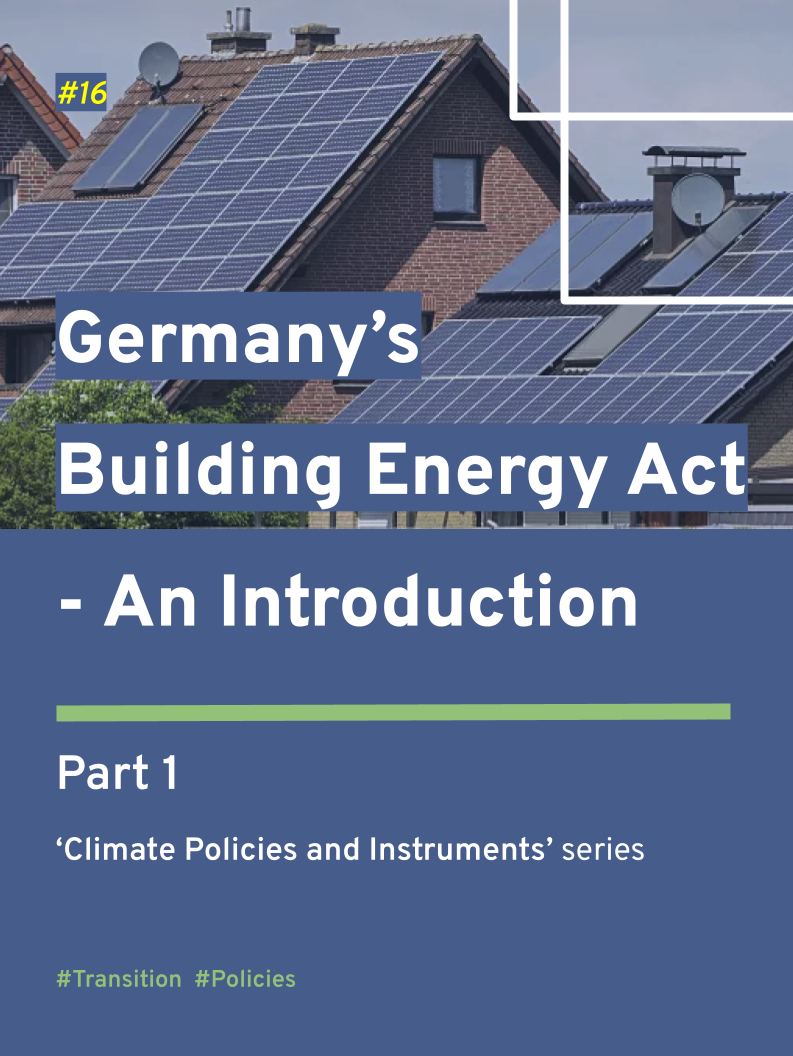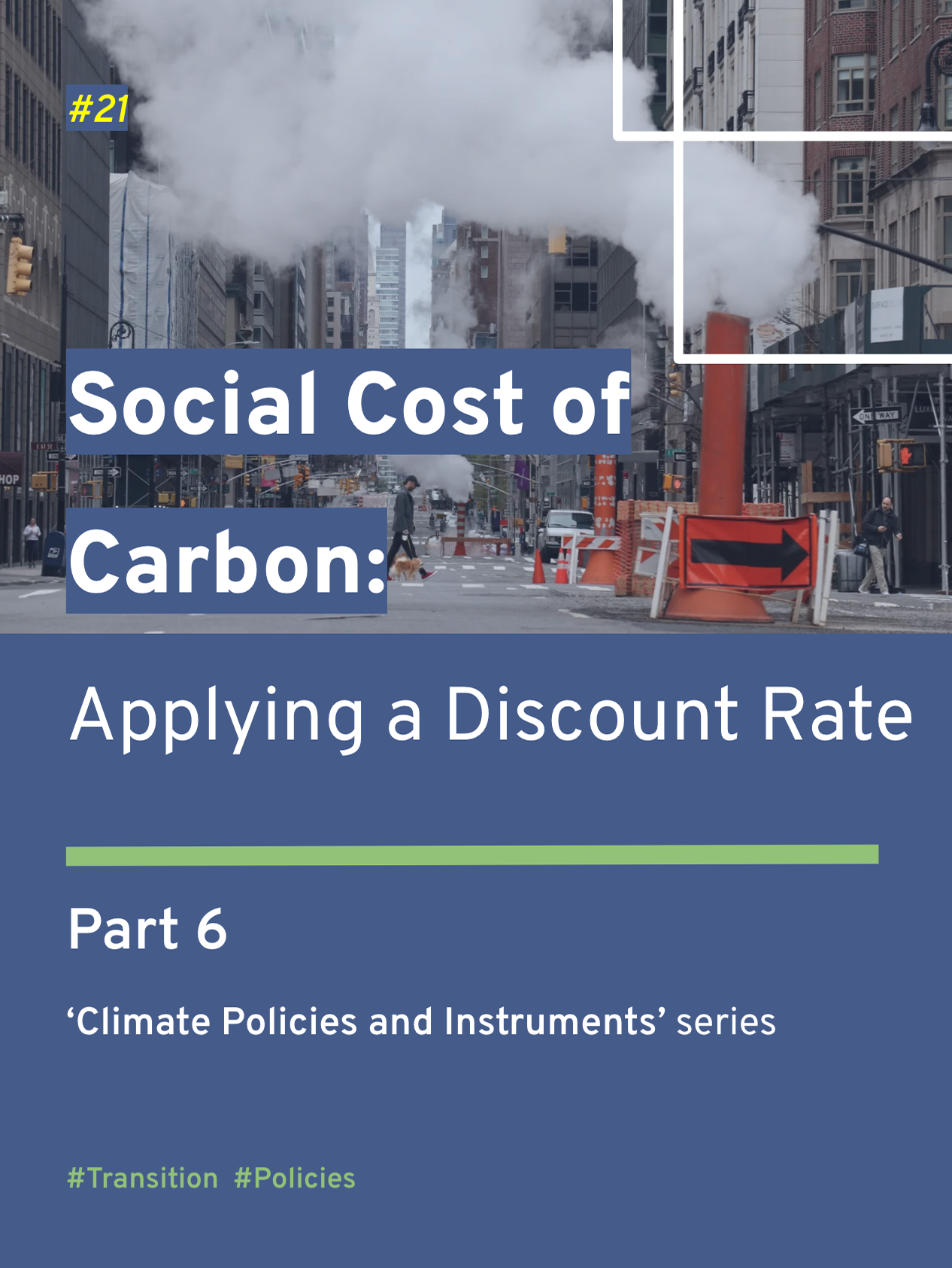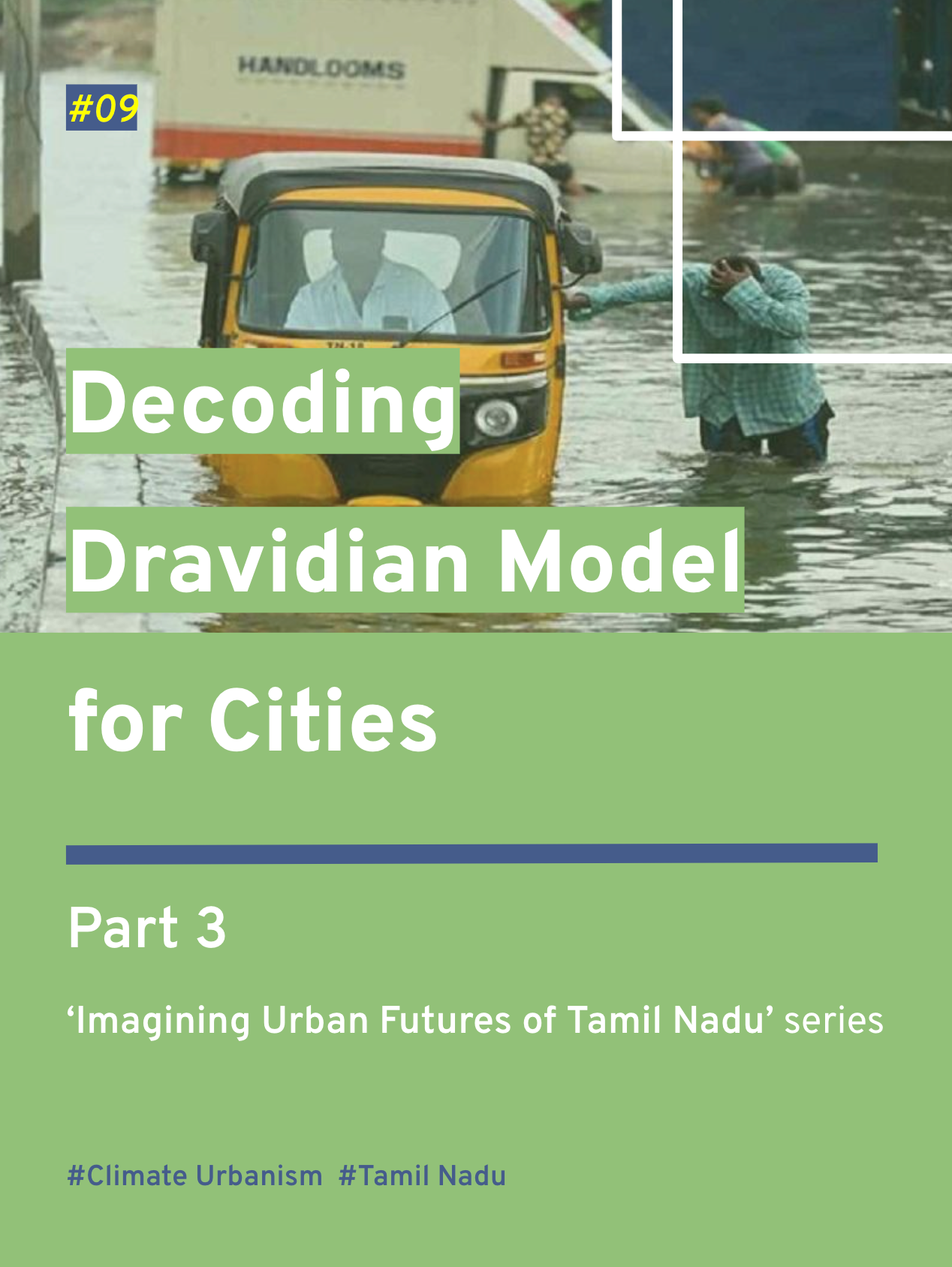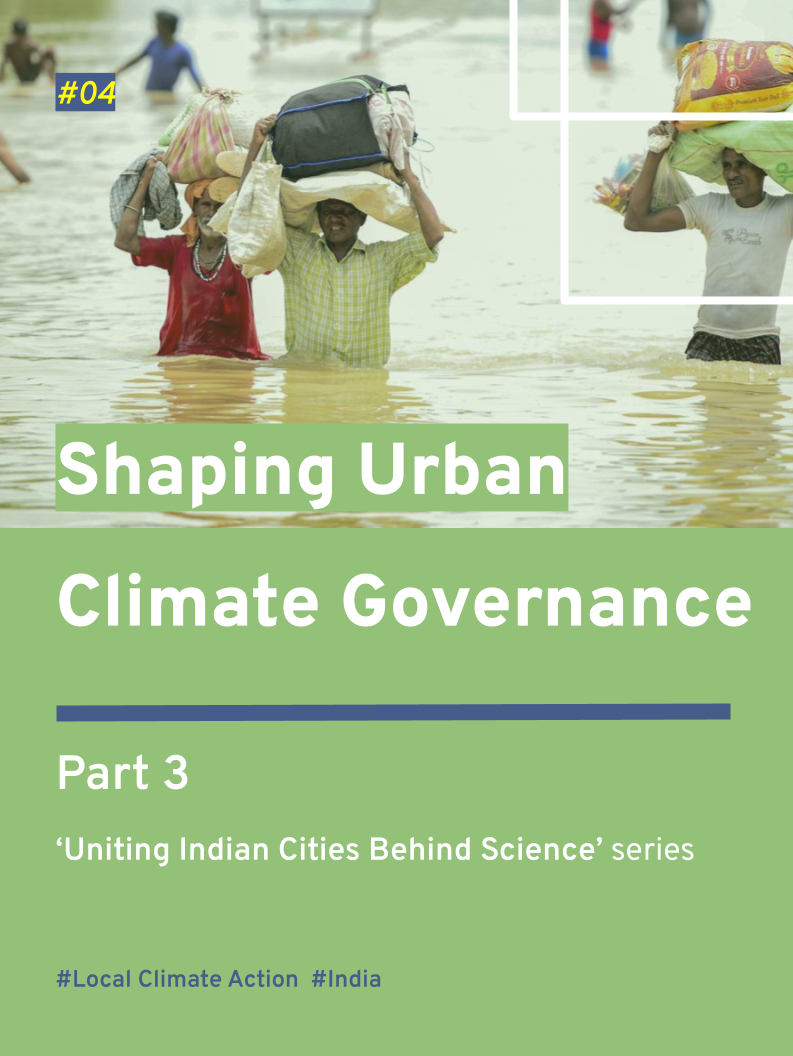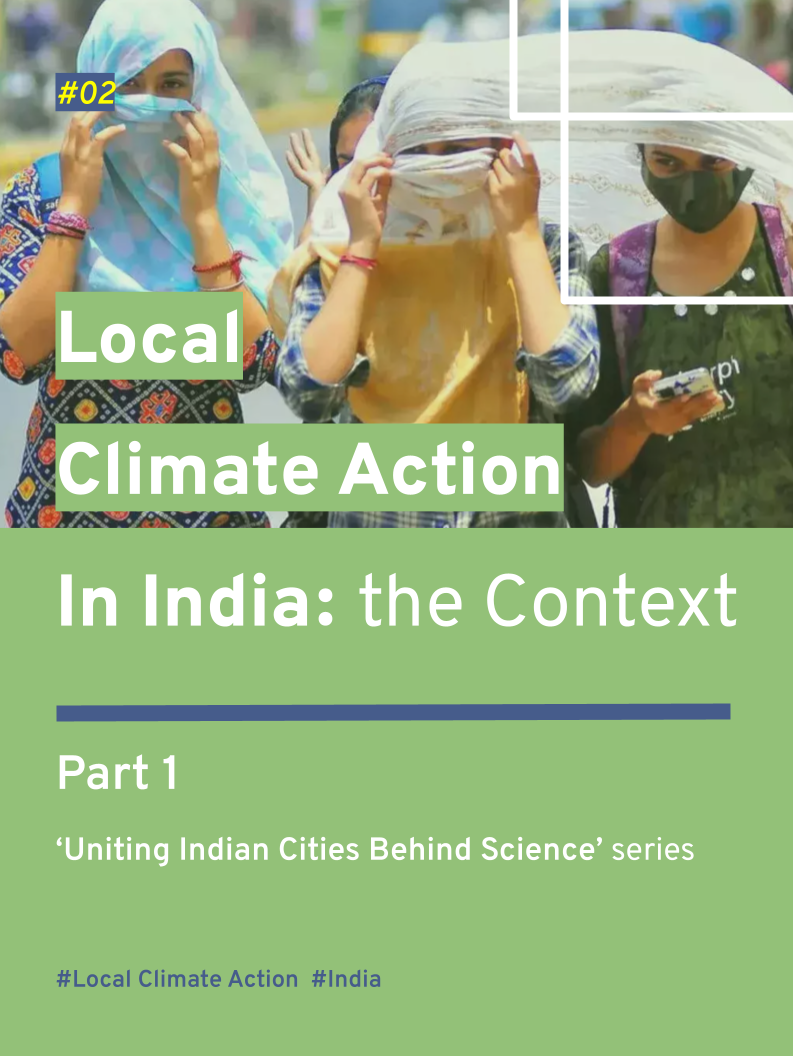Part 4 of ‘Imagining Urban Futures of Tamil Nadu’ series
Kathipara Junction Flyover, Chennai, Tamil Nadu (TN), India (Source: R. Ravindran, The Hindu)
Read Part 2 and Part 3, which propose four threads to explore Tamil Nadu’s urban futures through ‘Climate Urbanism’ and decode the principles of the ‘Dravidian Model’ underpinning urban development.
“The futures we shape are neither ‘natural’ nor ‘universal’, nor are they pre-ordained. Futures, we argue, are contextual,” suggested Carlos López Galviz and Emily Spiers in their Social Futures Manifesto. This blog series is set on a similar belief: to explore context-led futures for the State of Tamil Nadu. Hence, taking utmost awareness of the challenges involved in bringing together two relatively recent and evolving theorizations for development—Climate Urbanism and the Dravidian Model—this blog and the next one attempt to answer the question, ‘What urban futures could TN have if led by the globally-informed climate urbanism in intersection with the locally-rooted Dravidian Model?’. This piece frames a direction for spatial and social development.
This is just a speculative direction. Not a prediction or a prescription.
1. Climate futures through new spatial scales
As climate urbanism takes over cities' planning, policy, and governance, two challenges come up. Firstly, there is a threat of increasing segregation of urban citizens due to the recent rise in populism and nationalism, both in the global and regional contexts of Tamil Nadu, exacerbated by increasing inter-state migration. Secondly, the impact of climate catastrophes is compounded when they intersect with other humanitarian emergencies, such as the COVID-19 pandemic. These challenges are not limited to a particular sector. They cannot be addressed by practising the conventional ‘central city redevelopment strategies’ through the Smart Cities Mission, or by positioning ‘climate action’ as an independent deliverable of the State's Environment Department. This brings up the question of scale for climate urbanism, and the need to share and spread the climate action spotlight within and beyond the urban boundaries, administered as municipal corporations, municipalities, town panchayats, municipal zones, and wards.
On this note, the newly launched TN Climate Change Mission targets to create district-level climate mitigation and adaptation plans, geographically covering the rural and urban parts of the state and implement targeted pilots such as Climate Smart Villages, Climate Resilient Green Temples, and Green Schools. Under general consideration, this approach sets an appreciable precedent for climate urbanism, by ensuring a state-wide holistic coverage, through district-level plans and special initiatives or typological quick-wins for political visibility.
But what happens after the district-level plan? What happens to ecological resources that flow across districts? Is it fair and acceptable to let these arbitrarily drawn administrative boundaries decide how we plan and implement climate action? We can only hope that these questions will persuade policy-makers to be flexible and creative about the ‘scale of planning and intervention’ for urban climate action.
The geographic area of districts in TN ranges between approximately 500 sq km (Chennai) and 6,000 sq km (Salem). While planning at the district level gives complete coverage, implementation routed through smaller administrative units (wards and panchayats) should also enable competent delivery. In this regard, neighbourhood-level climate action, focusing on communities, could serve as a place for participation and experimentation in policy, planning, and governance. In addition, considered as some of the most grand ‘Disaster Capitalism’ experiments, the proposals received for New York’s Rebuild by Design (2013) competition, for the Lower Mississippi River Delta (2014), and for San Francisco's Rebuild by Design (2018) commonly followed ecological rather than administrative boundaries.
The urban futures of the coastal state of Tamil Nadu could experiment with two spatial goals: ‘leaving no one and no neighbourhood or ward behind’ and 'mainstreaming ecological boundaries’. The 649 urban local bodies in TN are governed by 12,838 ward member posts. Imagine, by 2030, all these wards will have climate action plans with local priorities set in place to attract capital investments and streamline spatial information management. I agree; this may sound like an unrealistic dream, but yet is an essential one.
2. Climate infrastructure as socio-ecological welfare
‘Investment in sustainable, climate-resilient infrastructure is the growth story of the future,’ said the 2016 New Climate Economy Report. This idea, underpinning climate urbanism, is creating global investment assemblages, as the World Bank-International Finance Corporation declares that there ‘has never been a better time to invest in climate solutions’. Thus, we can argue that infrastructure-driven climate policy is shaping ‘new urban managerialism’. This inspires, persuades, and sometimes forces city leaders to adopt creative responses to inter-urban competition and neo-liberal austerity, alongside climate change.
Such a context also carries the risk of packaging and politically justifying any engagement with (private) investment partners, new financial institutions and networks, and highly expensive infrastructure (for investment and profit) under the blanket of reducing urban vulnerability to climate hazards. This presents an urgency to adopt a ‘welfare perspective’ for climate infrastructure that differentiates the government’s fundamental responsibilities to plan, fund, build, and operate basic urban socio-ecological services from those of extended high-investment infrastructure that could be explored through other innovative models. Otherwise, the limited public resources and rapidly increasing climate crisis will increase the dependency on private or corporate actors, for urban financing and governance, nurturing two urban populations. Firstly, the urban elites, who have insulation from climate change through their strong political and financial stability, and secondly, the increasingly vulnerable urban and suburban poor, facing the worst impacts of climate change.
For a predominantly urban state, TN neither has functional footpaths on all arterial streets nor has any state-wide programme to change this status quo. Isn’t that a sign of a fundamental gap and a problem in how the state approaches urban infrastructure?
TN, as a state known for social welfare policies and politics, carries the biggest responsibility and opportunity to approach climate urbanism as a matter of socio-ecological welfare and avoid segmenting the urban population. Gough and Meadowcroft highlight the difficulty in doing this, especially as the impacts of climate change are expected to increase expenditure on environmental policies. But, by refining the definition of an eco-welfare state and advocating for the linking of welfare state and environmental state approaches by policy and politics, Valon Hasanaj proposes 'eco-social integration' as a potential pathway to explicitly (output-based) and interconnectedly (policy integration) pursue both, ecological and social policy goals. The Dravidian Model’s adoption of climate urbanism could take this roadmap. For example, as the state provides ‘free bus transport’ services for women through current social welfare and empowerment policies, it could also take a complementary action to build footpaths for women (and all) to reach the bus stops safely and procure low-floor, low-emission buses through new environmental welfare policies. Such an approach would save the state from promoting exclusive climate-resilient districts through large-scale infrastructure projects that potentially reproduce inequalities.
Source: Chennai Climate Action Group
Wow! A satirical view and a creative expression of the state government’s misalignment between policies and actions. Anyone working on matters related to socio-ecological justice would share similar emotions and have strong opinions on ‘elitism’ and ‘capitalism’ that cloud climate action.
An ‘eco-welfare state’ could create a ‘fair state’ for all.
But will the Chief Minister’s ‘Everything for Everyone’ agenda include ‘nature and climate as stakeholders’? Especially when they don’t have voting rights and such a development pathway requires a serious ‘realignment exercise’ for the public institutions and politics. We have to wait and watch.
Framing the spatial and social constructs is an important part of exploring the urban climate future, but will that be enough?
Check out the next blog post to read how economics and governance could be reshaped to support a climate-responsive urban future for TN.
Have questions, thoughts, or feedback? Write to nagendran.bala.m@gmail.com.
